Don't wanna be here? Send us removal request.
Text
Liv (Livonian) Traditional Culture
youtube
In modern-day Latvia, a handful of descendants of a dying ethnic group – the Livs – are a small, yet tenacious group of enthusiasts of their cultural heritage. They take pride in their ancestry and over the past decades have, in various ways, sought to promote public awareness of their culture, language and lifestyle. This has been done through popular folkloric music, also the dissemination of information about their culture and history via festivals and camps, literary publications, websites and focused research of the past. Their efforts have met with some success – there has been a renewed interest in the Livs and public and state interest in the fate of this ethnic group has been piqued and acted on.

The Livs (or Livonians), are one of two indigenous ethnic groups of the territory of present-day Latvia and Estonia. The language of the Livs comes from a different language group to the Baltic language that the Latvians (and Lithuanians) speak. Livonian is from the Finno-Ugric language group (related to Estonian, Finnish and Hungarian) and sadly it is now deemed extinct, as the last native speaker of this language passed away in 2013. The Livs have almost entirely assimilated into the larger ethnic groups in this region. Yet the blood-line of the Livonians continues in many Latvians (and Estonians) and the language is still spoken as a second language by a handful of Liv descendants, linguists and enthusiasts. One of the most active Liv linguists, Valts Ernštreits, now a researcher at Tartu University, Estonia, has for decades been promoting Liv culture and language.
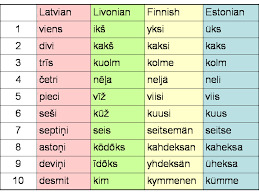
Today, around 200 people still identify themselves as Livs and are proud to cultivate their cultural heritage. Annual summer language camps are organised for children to learn their ancestral language, Livonian culture has received significant support from the state and a Livonian festival is held in summer in the northern village of Mazirbe in Latvia. Livonian language courses are available to university students studying Finno-Ugric linguistic studies in Rīga and Tartu, Estonia. Livonian music and culture has become more accessible to the public with the active and focused activities of the Stalti family and Estonian-Livonian band Tuļļi Lum who have recorded folk music in Livonian.
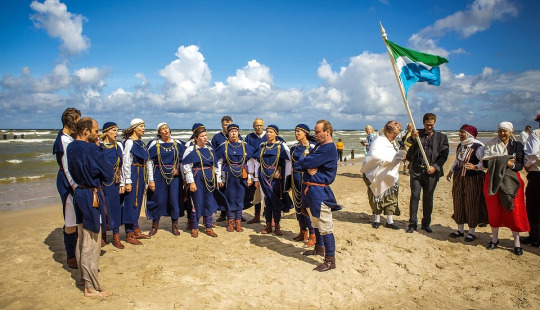
The Liv language, although no longer spoken as a native language, has, over the centuries, left its mark on the Latvian language. It is most certainly closely related to modern Estonian and Finnish, but there are a number of words in Latvian which are of Livonian origin. The stress on the first syllable in Latvian, is a language feature that comes from Livonian. The popular Latvian song “Pūt, vējiņi” stems from a medieval Liv wedding song.

The 12 Liv fishing villages that are located on the northern Kurzeme coast, though now rarely inhabited by descendents of Livs, are now popular spots for holiday homes, and some of the old, still unrenovated homes are a legacy to what once was. This area is called the Liv cultural space and one of the villages, Mazirbe, has a House of Liv Culture which is worth a visit to learn more about the heritage of this ethnic group. It is part of the heritage of Latvia and its preservation is just as important.
youtube
youtube
7 notes
·
View notes
Text
Suitu sievas
The other well-known polyphonic singing group are Suitu sievas (translated as: “the Suiti women”) from the Suiti region. The Suitu sievas are renowned for their witty and light-hearted, ad-libbed verses, with the purpose of poking fun at others’ flaws, which is later glossed over, admitted by the singers as being sung merely in jest. An international burdon festival is held in the Suiti region of Latvia once every four years.
youtube
0 notes
Text
Latvian Folk Costumes
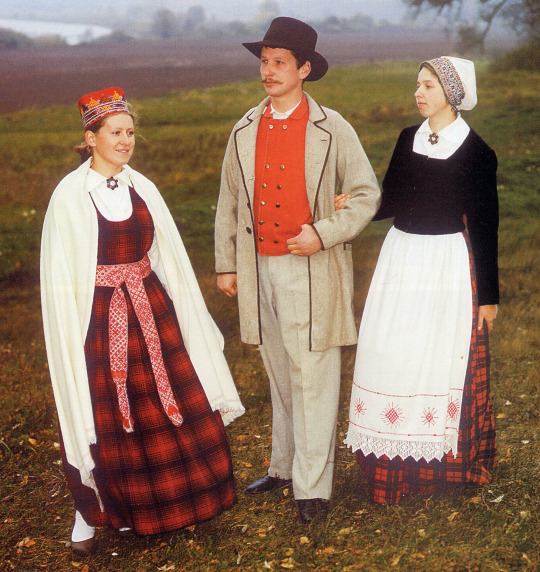
Latvian costumes are testimony to Latvian handicrafts and crafts – a full Latvian folk dress is a work of art because of the handiwork involved in creating it. The skills required to weave, embroider, sew, and create all the separate pieces that make up a folk costume are a unique and complex – requiring great patience and skill to create the intricate designs. The designs are varied, as the folk costumes, each from a different region of the country, are quite different.
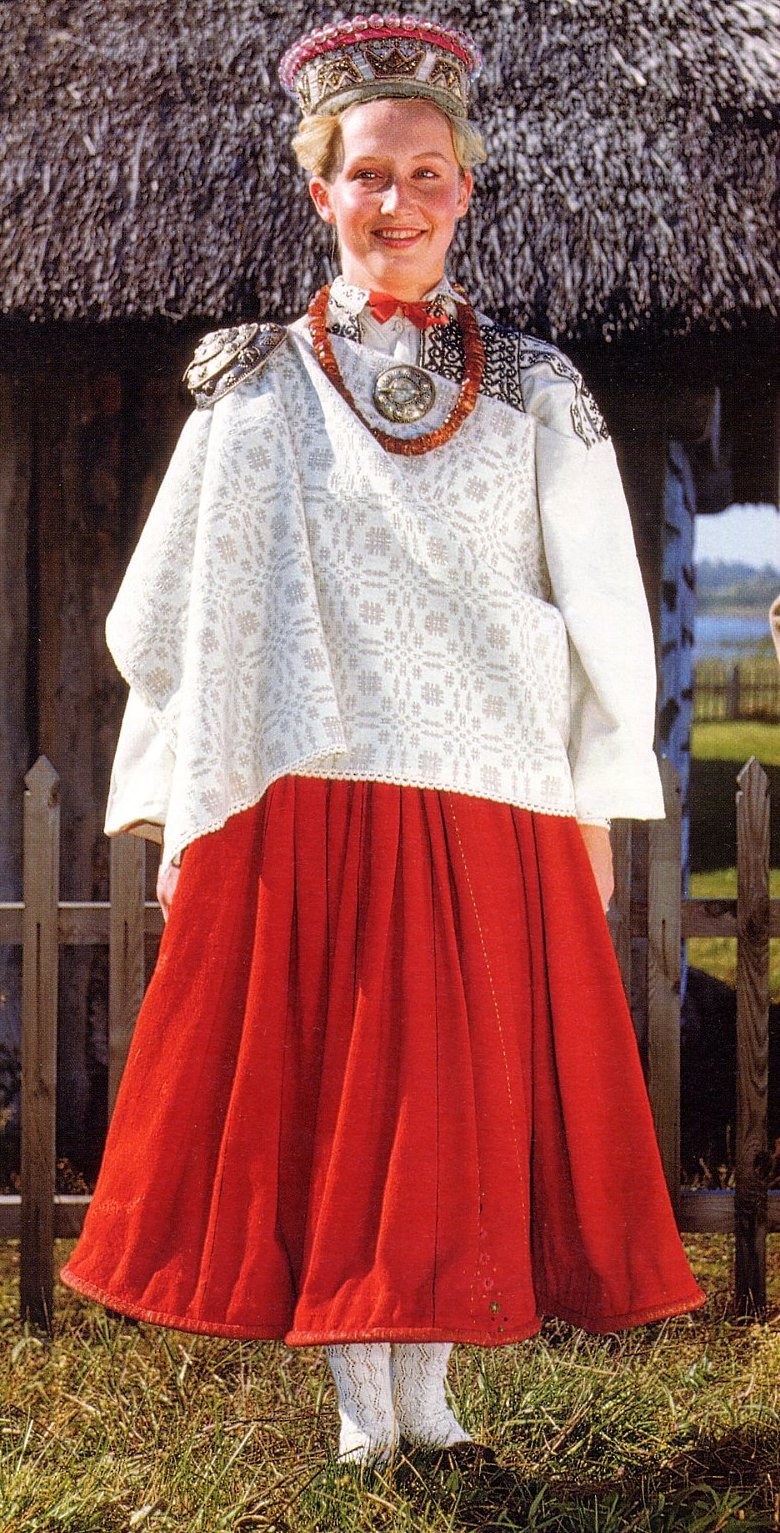

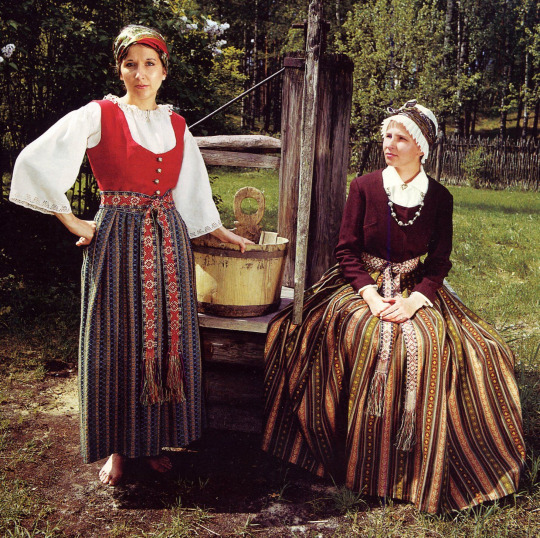


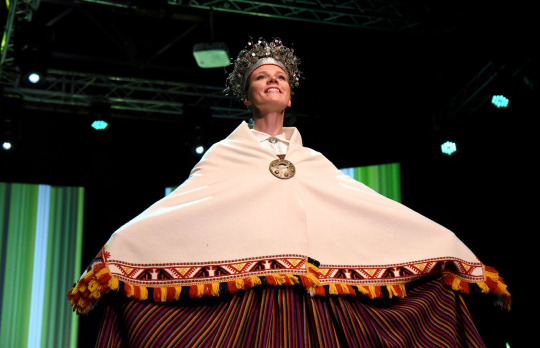
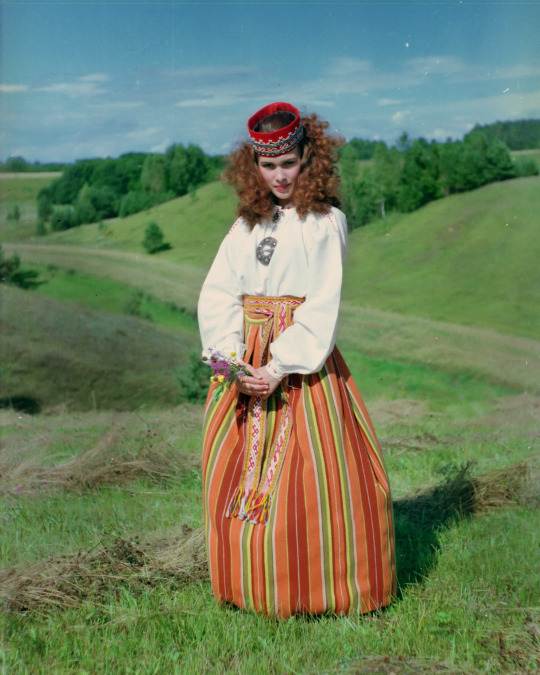

The other feature worth highlighting are the ornaments or symbols woven, forged, sewn, and embroidered into the costumes. These are not merely aesthetic features, but many centuries ago they had a more personal significance – each symbol had a meaning, often to protect the wearer from evil spirits, death, illness. Wearing clothing was not only for warmth or practicality, protection from the elements or aesthetics but with a deeper, more powerful, mystical meaning. Symbols that can be found on the skirts, tunics, coats mittens, crowns, blouses, shawls all have an association with ancient Latvian gods worshipped by the Baltic tribes. Latvian gods such as Laima, Māra, Ūsiņš, Dievs, Jumis, Mēness and many other symbols were considered as guardians and therefore their power was invoked for protection and good fortune.
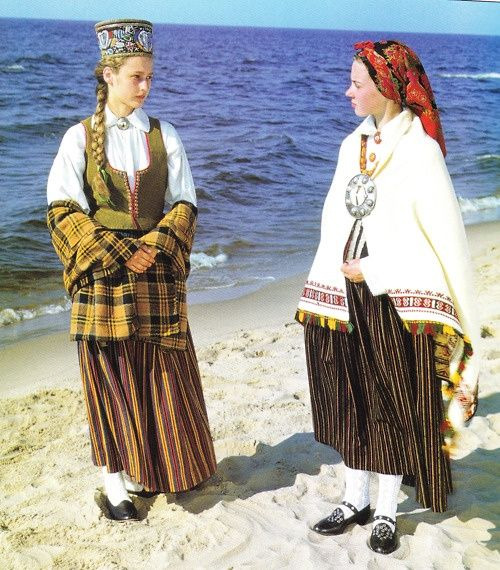
The regional variety in folk costumes is said to have come about because of the long centuries of feudalism where Baltic German nobility ruled the territory that is now Latvia. As part of this system, the Germans owned manorial estates all over countryside and the Latvians were the peasants who worked the land. They were bound to these estates and forbidden to move about and consequently, lived rather isolated from other nearby regions, leading to the development of unique patterns and styles in each costume.


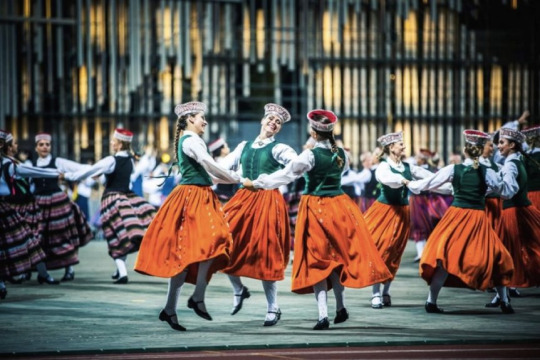

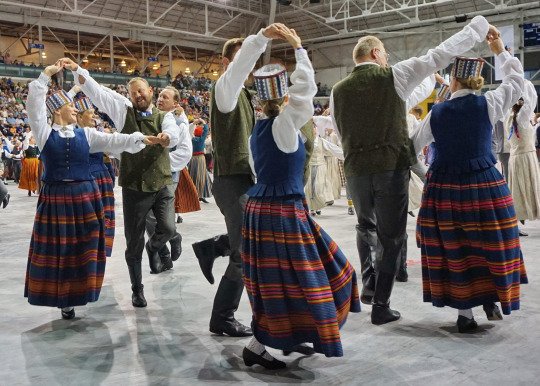
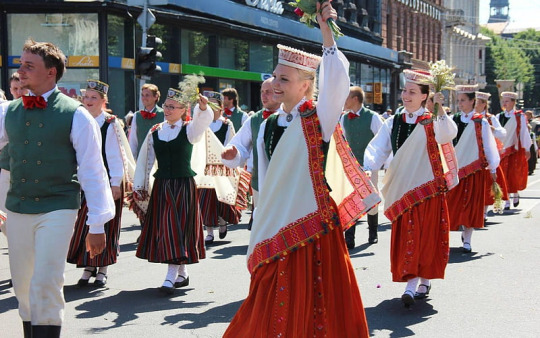
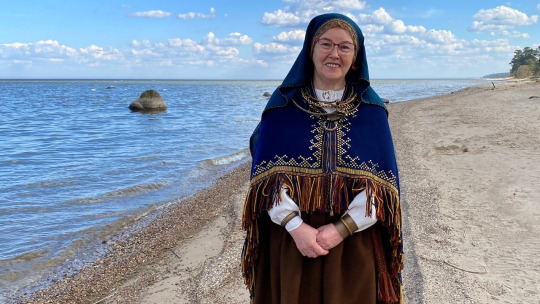
It is also worth noting that the folk costumes worn today are from different historical periods. The single-toned, blue- and brown-hued costumes with bronze jewellery and leather footwear are archaeological costumes from the 7–13th centuries, the era when the ancient Baltic and Liv tribes inhabited Latvia. Remnants of these costumes have been discovered on archaeological digs in Latvia, pieced together, and recreated by craftsmen with an interest in learning these ancient crafts, as well as understanding the symbolism that decorated the clothing, weapons and other household goods. There is a whole movement in Latvia (and other parts of Europe), where the younger generation, inspired by patriotism, have taken a great interest in recreating the past and learning about their ancestors. Festivals, workshops and a rejuvenation of the beliefs and rituals of the ancients all form a part of this, and traditional costumes take pride of place and play a central role in this lifestyle.
Nowadays, Latvians have also taken to wearing a folk costume on special occasions such as on their wedding day, the christening of their children, during the Song and Dance Festival (even as spectators), and during Jāņi festivities in midsummer.
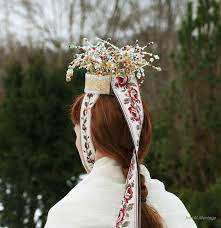
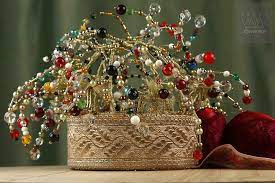
Traditional headpiece
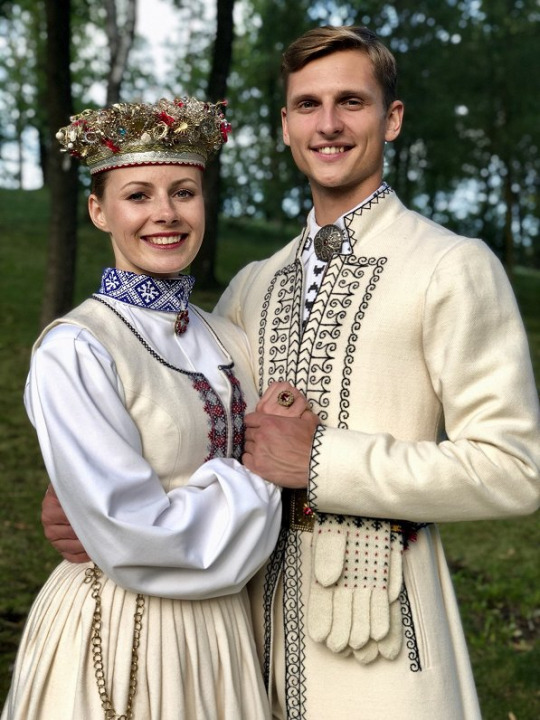
The more often-seen folk costumes worn by Latvians are the patterned, colourful ethnographic costumes – originating from the Middle Ages up to the 18th and 19th centuries. These were the clothes worn by peasants, or farmers, that evolved over many centuries, and took on a more elegant form when gentrification occurred and the wealthier peasants who had become landowners moved to larger towns. The elegance culminated in the mid-19th century, around the time of the First Song Celebration. More elaborate folk costumes included shawls, headscarves made of silk, intricate, sometimes large brooches, elegant overcoats, vests and top-hats for the men all were examples of this.
Nowadays there are also stylised folk costumes which are variations on the archaeological folk costume theme and are used by folk groups in stage performances that depict and re-enact – in a symbolic sense – the time of the ancient Baltic tribes. Here, linen shirts and dresses, trousers in white, grey and brown colours form the stylised costumes of the ancients. This was visible in the initial scenes at the Dance Celebration in 2018 at Daugava Stadium as well as dance group performances with modern choreography, depicting a mythical long-lost ancient past.
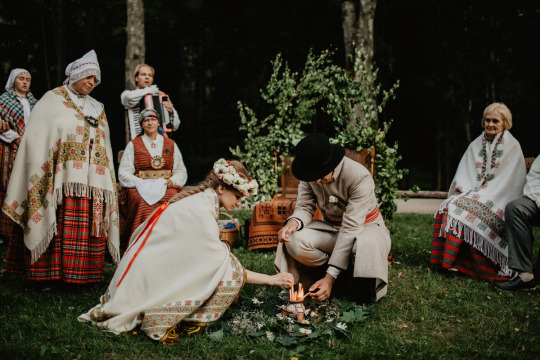

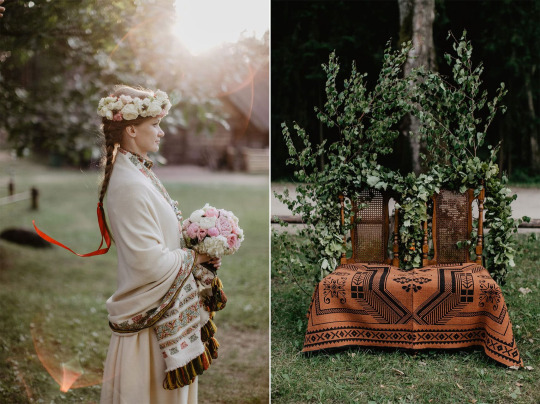

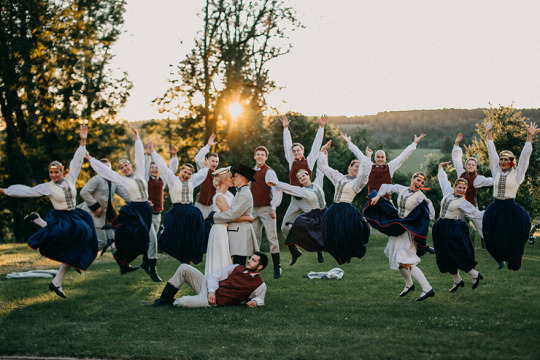
7 notes
·
View notes
Text
Suiti Cultural Space
The Suiti are an ethnic group who live in the western region of Kurzeme in the parishes of Alsunga, Gudenieki and Jūrkalne and surrounding areas and are renowned in Latvia for their colourful folk costumes and vocal drone – or bourdon singing (singing a continuous low-pitched note while the melody is sung at a higher pitch level) – traditionally performed by the Suiti women. The Suiti have unique wedding traditions, folk songs, dances and melodies that have over the past decades been documented and recorded and are now experiencing a renaissance, having been highlighted as a noteworthy example of local intangible cultural heritage. The Suiti are primarily Catholics, living in an area comprising mostly Lutherans. Because of their different faith, historically, the Suiti isolated themselves from the rest of the world, allowing them to maintain and preserve their cultural traditions for centuries. For this reason, Alsunga was the last remaining region in the 20th century in Latvia where the traditional folk costume was worn daily; Suiti women only stopped wearing folk costumes after WWII. The unique Suiti singing tradition features two (usually middle-aged or elderly) Suiti women with a strong singing voice who know by heart a large number of verses of songs. The first one usually calls out these verses (for this reason, called a saucēja – literally “a puller”), sometimes varying the melody, followed by the other one – the locītāja (literally – “the bender”) – who repeats the same words with the same melody, but in a semi-tone lower. The other women singing together with them then sing the bourdon “ēēē”, often followed by “oooo”. Although singing may sound monotonous, as the melody is repetitive, it is usually enlivened by the text, which may be humorous and witty as well as with animated gestures that singers use to make the performance more appealing. Nowadays the Suiti have established various ethnographic ensembles who perform in concerts, at various festivals and also are available to anyone who wishes to have their wedding ceremonies enriched with these traditions. The wedding ceremonies of the Suiti are a symbol of the local identity of this region. Another unique element of Suiti culture is bagpipe playing, which has been preserved in this region of Latvia the longest. The playing of bagpipes disappeared as the choral culture developed and modern musical instruments such as the violin entered the cultural life of the local people. The folk costumes of the Suiti region – differ from other regions with their bright orange, red and pink colours, particularly in the villaines (plaid woollen shawls) and colourful floral headscarves worn by married women as part of their folk costume. The traditional socks and mittens worn by the women of this region also feature bright patterns and are unusually vibrant in colour. Another unique part of the folk costume is a large brooch, made of silver or gold or bronze-plated – meant for securing the shawl, with red glass set in the brooch. Add to this metal belts and crowns – and the end result is a traditional folk costume that is an impressive and colourful legacy from previous generations.

The Suiti also pride themselves on their culinary heritage, which, although simple to make, is seen as unique as it provides a look into what the standard local fare was a few centuries ago. Sklandrauši are traditional tarts with pastry made of rye flour and the filling made with local root vegetables – potatoes or carrots. Sour barley and curds soup, oat jelly, blood sausage, milk soup with dumplings. All of these foods, made with locally-grown produce have been part of the regional diet for centuries have now been classified as the culinary heritage of the region.


The Suiti as a geographical region of Latvia has become well known mainly for its cultural heritage and primarily its singing traditions and vibrant folk costumes. The richness of this tradition is evidenced by the number of folksongs that have been recorded in this region – a total of 52 thousand songs and their variations. This large amount of folksongs, outlining the traditions enmeshed in the daily life of the people living in this region, together with the format of presenting this oral tradition, which is particularly showcased in wedding rituals, all contribute to making it a unique and noteworthy part of Latvia’s cultural heritage.








0 notes
Text
Places in Riga - Nativity Cathedral
Nativity Cathedral was converted from Orthodox to Lutheran during WWI but after the war, it came back to Orthodox. This stunning architectural masterpiece is without doubt a must-visit place in Riga, which will leave you amazed.



1 note
·
View note
Text
Riga Old Town
Riga Old Town is part of the UNESCO World Heritage site list and is without doubt the most beautiful part of Riga. You must visit to learn everything about Latvian culture, see unique architecture, and appreciate Latvian history.

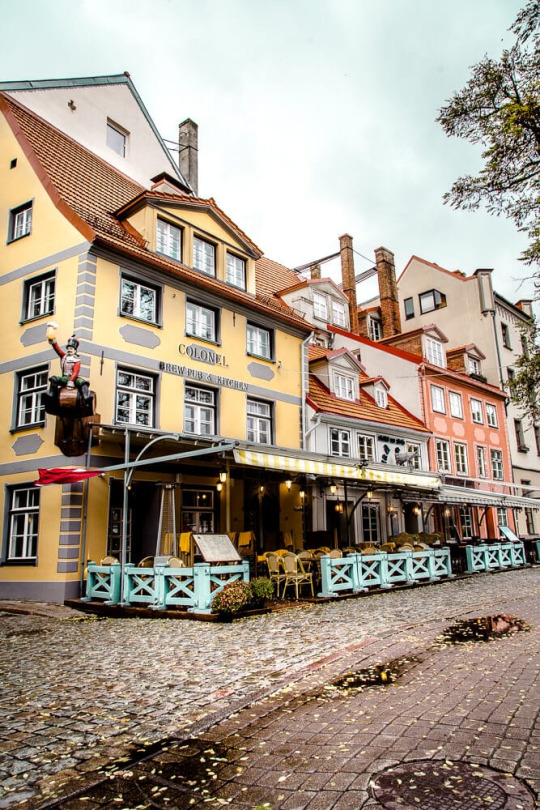
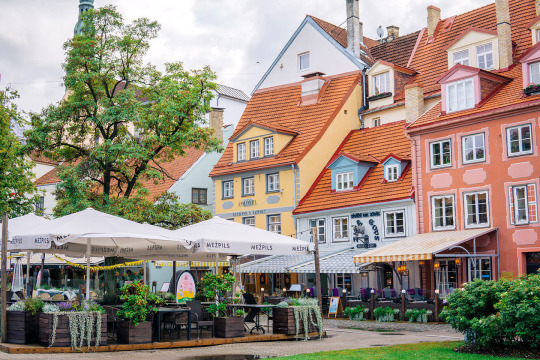
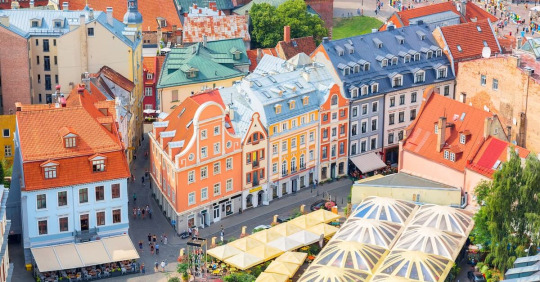


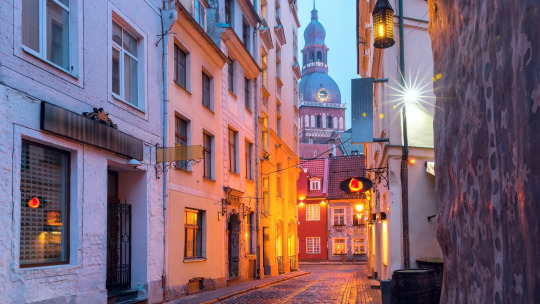
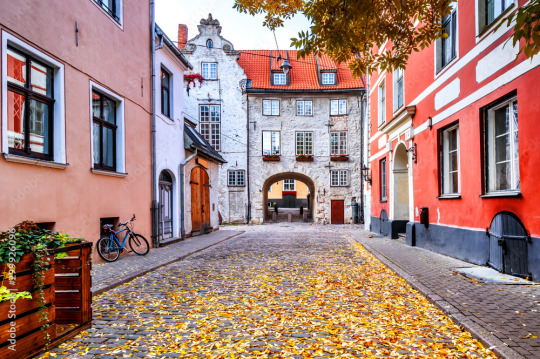
1 note
·
View note
Text
Jūrmala - Latvian city
Jurmala is the largest resort town on the Baltic Sea coast with a convenient geographical location – just over ten kilometers from the Latvian capital, Riga, and within a few hours' drive from Tallinn and Vilnius. The presence of the sea, a 24-kilometer-long beach, and the romantic wooden architecture give the city a unique charm. The city's history dates back two hundred years to when Europe discovered the healing properties of the sea and the first resorts began to form. Today, Jurmala is a place where nature, modern spa hotels, cultural heritage, and a contemporary city for business and leisure coexist.
Well-kept beaches and swimming areas Jurmala has a centuries-old tradition of beach culture, evolving to fit the lifestyle and habits of each era. Today, the 24-kilometer-long Jurmala beach, with its silky quartz sand and 11 well-kept beaches, attracts both locals and foreign tourists. The seashore in Jurmala is shallow for quite a distance, making it suitable for safe family swimming. The beaches are divided into calm and active relaxation zones, and there are cafes and children's playgrounds available.
Charming Jomas Street Jomas Street is the heart of Jurmala. It's a pedestrian street where vacationers and foreign visitors can be seen in all seasons and weather conditions. Legend has it that this is where the origins of Jurmala can be traced. In times when Jurmala's territory was still vast sand dunes, the sea breeze sculpted unique dunes and ridges, one of which eventually became the present-day Jomas Street. Today, Jomas Street is a center of public, cultural, and nightlife activities, offering numerous cafes and restaurants, quaint shops and souvenir stalls, street artists, entertainment venues, and cinemas.
Spa traditions and modern spas Nature has generously endowed Jurmala with unique healing resources. Jurmala is both a balneological and climatic resort, with therapeutic mud and the mild coastal climate enriched with pine forest air. The depths of the earth conceal mineral waters containing hydrogen sulfide, bromine, and sodium chloride, which have led to the formation of extensive deposits of therapeutic peat mud. Today, Jurmala's resort and medical facilities offer a wide range of therapeutic, rehabilitation, and spa services, making it an ideal place to combine leisure with health care.
Distinctive wooden architecture Wooden architecture, with its decorative turrets and glass verandas, is one of Jurmala's most prominent features. Wood was chosen for the construction of resort accommodations as early as the mid-19th century when vacationers began flowing to Jurmala from the cities. The unique aesthetics of wooden architecture embodied motifs of neoclassicism, Art Nouveau, and national romanticism of the time. Today, several historic buildings have been restored and are open to visitors, including the Rainis and Aspazija summer house, Aspazija's house, "Meža māja" (Forest House), and the Bulduri Exhibition House.
Great destination for children Jurmala is an excellent place for children to enjoy their vacation. There's no such thing as "boredom" here! The range of activities offered to children, both in the city and in nature, is so extensive that boredom simply doesn't exist. During the summer, Jurmala's beach turns into a 24-kilometer-long, spacious sandbox where kids can build sculptures, castles, or simply splash in the waves. The shallow waters of the bay are ideal for learning to swim, even for the littlest beachgoers.
In the Dzintari Forest Park, there's an adventure park called "Jurmala Tarzan" and a "Rope Park," offering activities of various levels of difficulty, suitable for all ages. The attractions at the Līvu Aquapark entertain both young and old, providing a tropical experience. Jurmala's entrepreneurs also offer special deals for children, ranging from attractive menus to special spa packages.
Harmony with nature Jurmala is one of the few European cities where you can not only breathe sea air but also enjoy the aroma of pine forests simultaneously. A third of the city is covered by forests, and the sandy beach is framed by pine-covered dunes. The forest has entered the city in the truest sense, bringing peace and harmony to its rhythm, and offering residents and guests the sense of balance that is so often lacking in the modern world. Nature enthusiasts can take a walk on one of Jurmala's nature trails, which stretch through ancient forests and even older swamps.
The flavors of Jurmala Jurmala has its own unique taste, where traditions of various culinary cultures blend with the unique flavors of local wildlife. The resort town's restaurant scene has been shaped by history, contemporary fashion trends, legendary local classics, and the daily rituals of Jurmala residents. Gastronomic journeys in Jurmala can take you to great dining places in the dunes or by the river, where, while enjoying your meal, you can watch sailing yachts and revel in the wonders of nature. It's just as easy to immerse yourself in the atmosphere of the Caucasus or meet exotic Eastern flavors. You can also journey through time and catapult yourself into the Soviet past. Or you can stay in the cosmopolitan present, where Italian and French cuisine dominates and is a matter of course.
Variety of culture and art Jurmala's historic open-air stages and concert gardens have been providing extraordinary outdoor concert experiences for over a century. Even today, in perfect symbiosis with natural lighting and distant waves.
Cultural and Artistic Diversity Jurmala's historic open-air stages and concert gardens have been providing extraordinary outdoor concert experiences for over a century. Even today, in flawless symbiosis with natural lighting scenography and the distant cries of seagulls, music delights audiences in the open Dzintari Concert Hall, on the beaches, and at the stages. History enthusiasts will find it fascinating to visit the Jurmala Museum, which houses over 60,000 items that tell the story of life in the resort from the late 19th century to the present day, including vintage postcards of Jurmala and works by renowned artists.
Jurmala boasts several galleries and exhibition halls where you can not only acquaint yourself with local artists but also participate in workshops and create your own works of art. Furthermore, following global trends, art in Jurmala has entered public spaces, with one of the busiest railway stations, "Dubulti," now transformed into a contemporary art space.
Enchanting Sunsets A sunset is a spectacle that requires no ticket, and the white sandy beach, where you can collect seashells as souvenirs, is the best place to watch it. Even in winter, when the sun in Jurmala sets not far beyond the sea horizon as it does during the warmer seasons but more to the left, the calm shores and the water still exquisitely display a color palette of pinks and oranges. Jurmala's beach stretches for 24 kilometers and offers a variety of spots, including quiet coves, apart from the brisk waves, to satisfy every visitor.
Active Recreation and Sports Sun, sea, wind, white sands, kilometers of coastline, and pine-scented air – Jurmala's natural environment is conducive to a wide range of active recreational activities. Alongside leisurely strolls, simple jogs, and Nordic walking along the seaside, through forest trails and hills, beach volleyball or soccer on the dunes, romantic adventurers and wind enthusiasts can opt for water skiing and kiteboarding. Along the coast, you'll find several well-equipped swimming spots, along with opportunities to rent boats, kayaks, stand-up paddleboards, and windsurfing boards, as well as excursions on riverboats, historic sailboats, and yachts. Golf enthusiasts can play golf at Jurmala Golf Club & Hotel, while tennis and squash are available at the "Lielupe," the most modern tennis center in the Baltics. In winter, Jurmala's beach transforms into a snowy 20-kilometer cross-country skiing track, and skiers can explore pine-covered hills and sometimes even the frozen bends of the Lielupe River.
A Resort for Every Season Jurmala is a unique destination in every season. In the summer, Jurmala lives the classic life of a seaside resort town. In spring and autumn, it attracts those who seek a peaceful and leisurely getaway in nature to improve their health and rejuvenate. During this time, the beach is ideal for cyclists, Nordic walkers, and lovers of peaceful walks. When winter arrives, the resort buzzes with pre-holiday excitement, and Dzintaru Forest Park is transformed into a snowy fairytale with thousands of lights. Jomas Street dazzles with the city's Christmas tree, and local cafes and restaurants pamper visitors with delicious food and warm drinks.
Cold-season water pleasures can be enjoyed at the "Livu Aquapark" or in one of the many spa complexes, where after a wintry stroll, you can warm up in mineral water baths or relive summer by plunging into a pool with warm seawater.
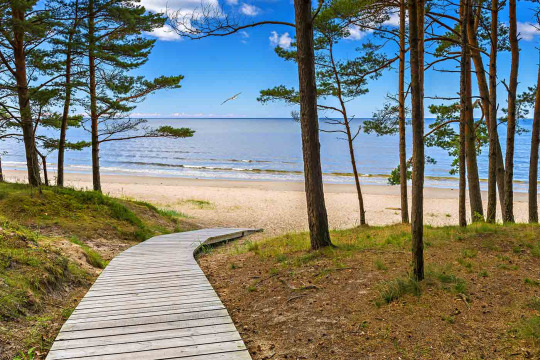
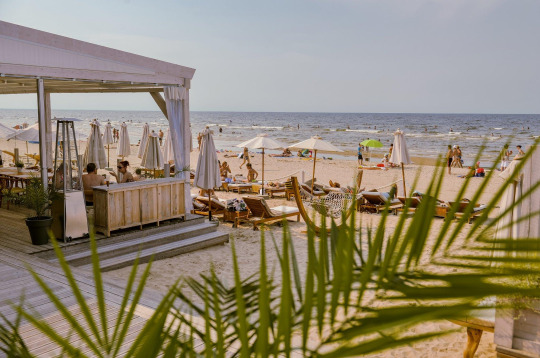
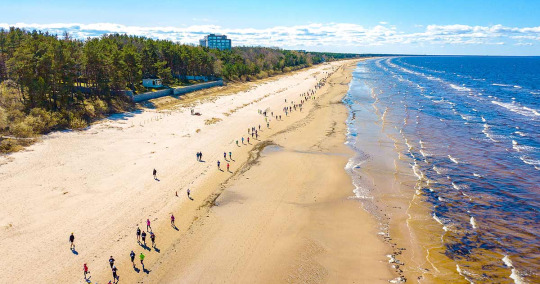

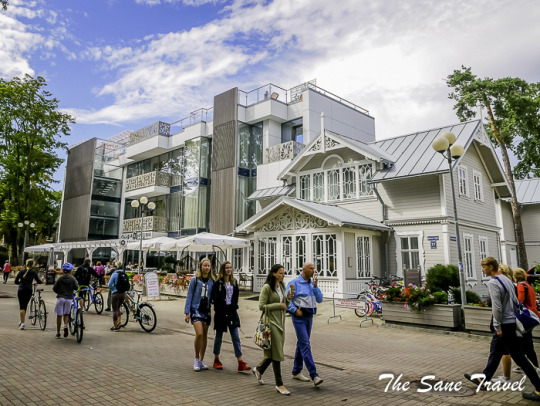
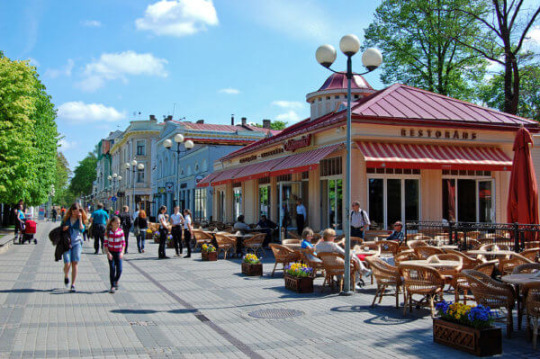
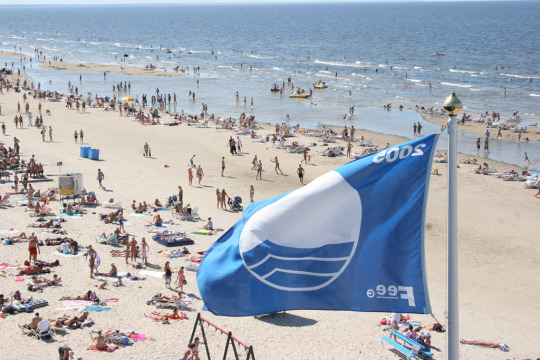
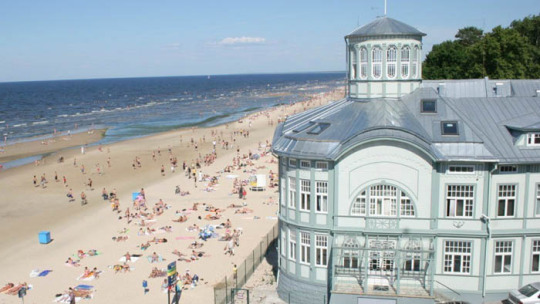

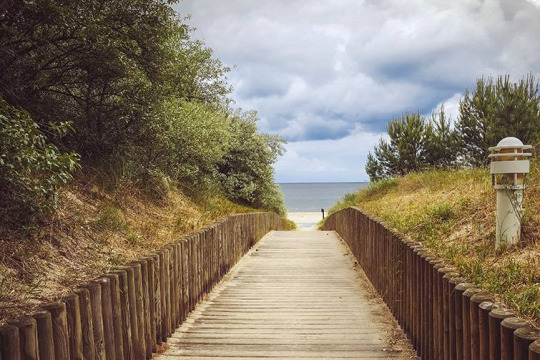
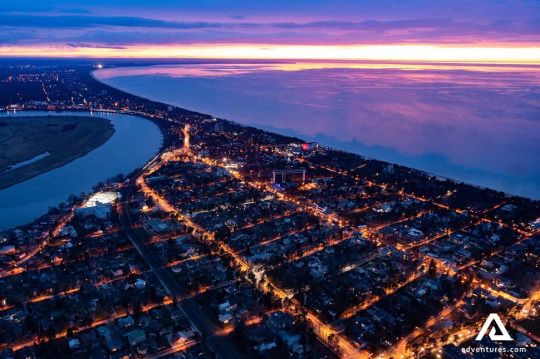
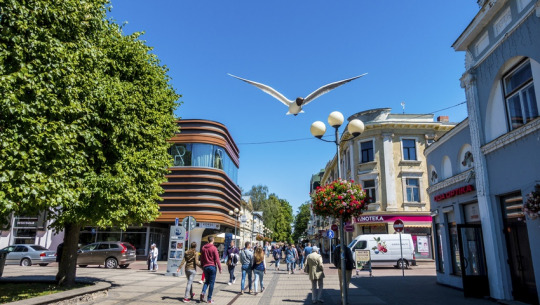
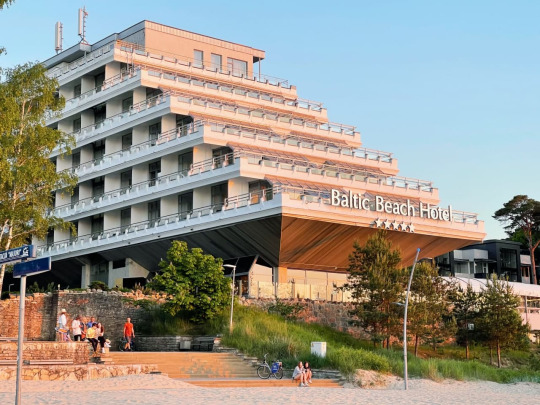
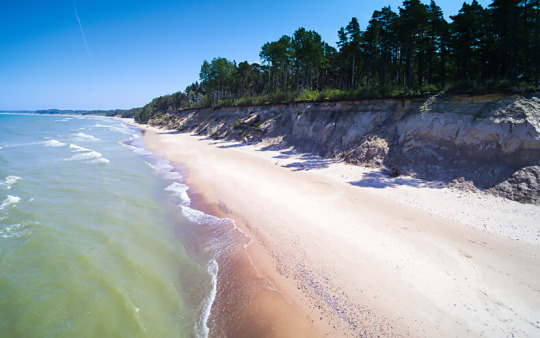
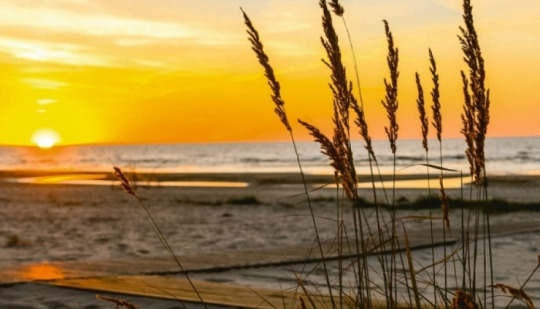
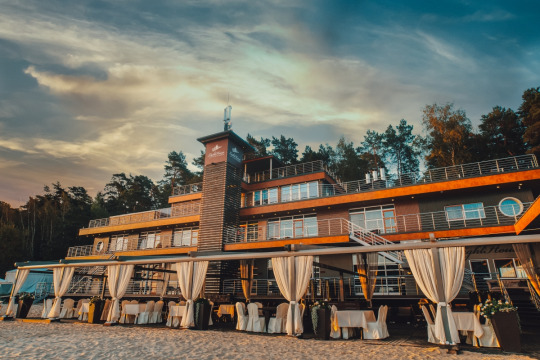
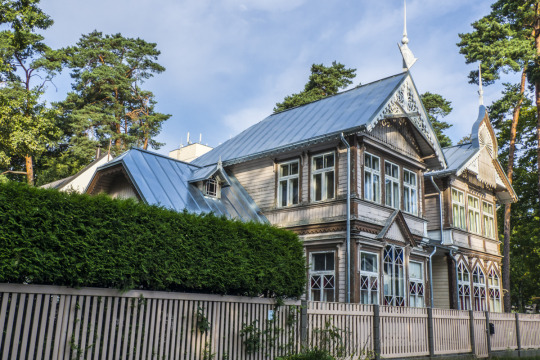
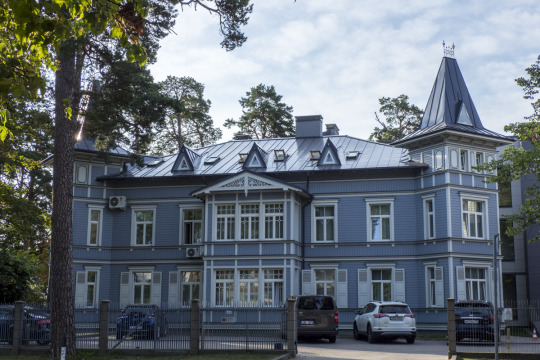
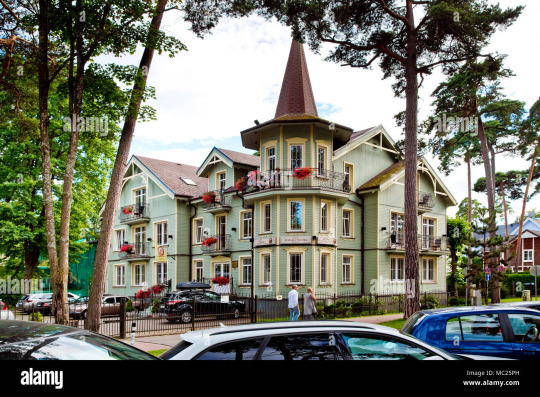

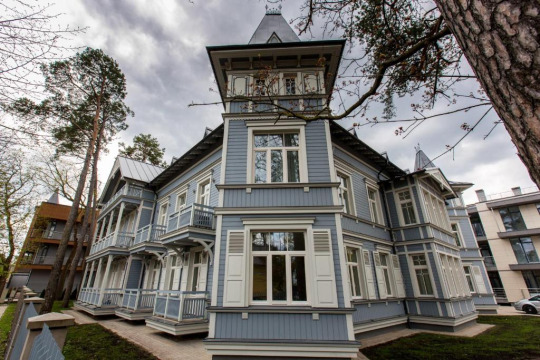
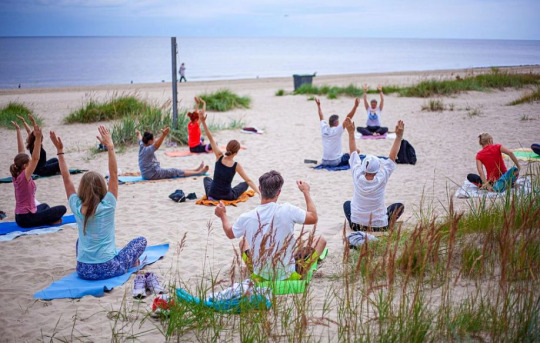
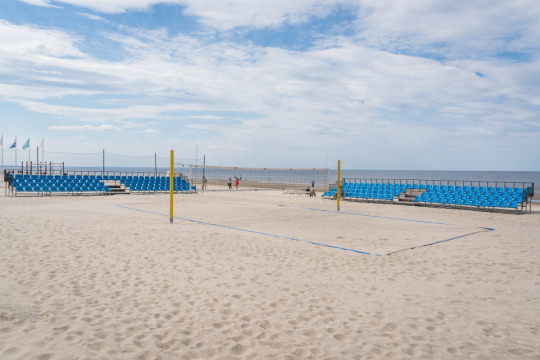

0 notes
Text
Daugavpils - Latvian city

























"From the historic castle stones to the proud Art Nouveau buildings in the city center, to the low wooden houses with their finely carved gray-blue window shutters and geraniums on the balconies in Forštate, Daugavpils is a city with a strongly pronounced sense of home, a guardian spirit that accompanies everyone who was born here or has lived here for some time," writes poet Anna Rancāne.
Daugava means "many" or "abundant."
In Daugavpils, there is an abundance of waters, languages, cultures, beliefs, and destinies. It's a city that has been multi-ethnic, multicultural, and multi-faceted since ancient times.
Daugavpils is a multi-cultural, multi-ethnic, and multifunctional city, a cross-border hub for economic development and services.
Daugavpils is:
A city with a high quality of life and environment and a high level of tolerance. An easily accessible international hub for services and economic development. A cross-border center for culture, science, and education.
2 notes
·
View notes
Text
Ventspils - Latvian city
Over the centuries, the diligence of fishermen and the spirit of the Kurzeme region have greatly contributed to the transformation of Ventspils. In the past thirty years, the city's residents have made well-considered decisions and worked professionally and purposefully, turning their city into an unrecognizable place. From being a city that was once advertised in apartment listings as "not offering Ventspils," it has evolved into a modern, well-maintained, and developed city with a pleasant and comfortable living environment, developed infrastructure, and a diverse range of cultural, educational, sports, and recreational offerings. Over these two decades, the people of Ventspils have developed an entirely different perception of what constitutes excellent road surfaces and communications, what the city's architecture and landscape should be like, and what constitutes high-quality social and physical infrastructure. A diverse and extensive range of physical culture and sports, libraries, cultural venues, medical facilities, and educational institutions is now a matter of course. Ventspils residents are accustomed to the fact that everything in Ventspils must be perfect. If it's not, they notice it immediately and strive to make improvements.
Ventspils is a family-friendly city where care is taken to ensure that it is comfortable for Ventspils families to live and interesting for families from other cities and countries to visit. What makes Ventspils special is the harmonious coexistence of a modern port, innovative factories, and a beautiful beach. The Blue Flag has been waving over the beach since 1999, serving as a testament to its cleanliness and safety.
Ventspils is a city that does not leave you indifferent. It is like a small state within a state. To experience the European atmosphere, there's no need to leave Latvia - you'll find it all in Ventspils, where time passes differently and flowers, despite the dictates of nature's rhythm, bloom earlier in the city streets than elsewhere in Latvia. Those seeking leisurely and carefree relaxation stroll through the city's lanes, their heels tapping against the cobblestone streets. Ventspils is a capital of flowers and fountains; colorful cows can be found on streets, parks, squares, and courtyards. The city is adorned with flower sculptures, figurative flower arrangements, and charming flower beds that never wither, even on the hottest summer days.
The phrase "it's not possible" is foreign to Ventspils, and even when faced with challenges, a creative approach is found. For instance, during street construction, an artificial skiing hill was created by excavating the ground. The Ventspils residents' capabilities are also demonstrated by their ability in the 21st century to establish a new city center on Lielais laukums (Great Square) and have the audacity to name the concert hall after the state! Spring, summer, autumn, or winter – in Ventspils, everyone finds something for themselves: Adventure Park for the adventurous and active, Mazbānītis and children's play areas for families with children, Ventspils' vast Blue Flag beach and dunes where you can sunbathe even when the thermometer shows only 15°C, the enjoyment of the Water Adventure Park and SPA complex, stargazing with a modern telescope-equipped observatory, and the Baltic's most modern and Latvia's only digital planetarium… Ventspils offers all of this and much more.
























0 notes
Text
Talsi - Latvian city
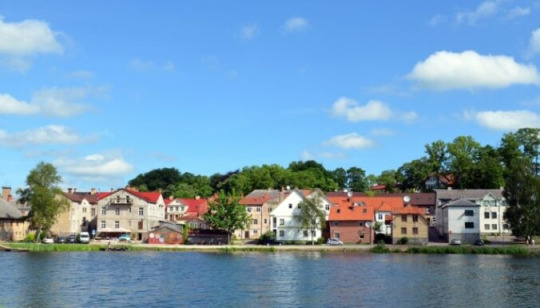


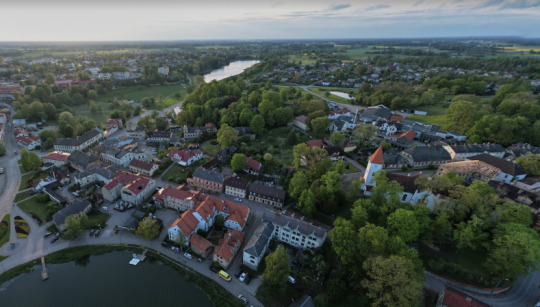
In the course of history, Talsi has endured wars, and its inhabitants have faced hardships. The city also suffered a major fire in 1733.
In 1873, Talsi opened a private district school, known as the "kreisskola." Notably, linguist K. Mīlenbahs served as the director of this school from 1881 to 1889. In 1887, a city school with instruction in the Russian language was established in Jauntalsi.
At the beginning of the 20th century, Talsi experienced the events of the December 1905 uprising and the atrocities of punitive expeditions, resulting in the burning of around 60 buildings and loss of lives.
Talsi was granted city rights by the Provisional Government of Russia in 1917, but peacetime life began in the 1920s. Talsi remained a city of craftsmen and small traders, with each house often having its own small shop. Since 1913, when the Latvian Society House was built, Talsi became a hub for theater, dance, singing, and art exhibitions by local artists. In the 1930s, popular sports included football and athletics.
In November 1960, a modern cinema, "Auseklis," with 500 seats, spacious waiting areas, a reading room, and a snack bar, was opened. In 1960, the construction of an open-air stage began, and after its reconstruction, Sauleskalna estrāde could accommodate 5,000 spectators. Until 1961, a narrow-gauge railway served passenger transportation, and the last small train ride took place in 1967. In 1965, the "Talsi" metalworking factory was established, once the largest and most renowned enterprise in the city.
In the autumn of 1972, the construction and improvement of Jauntalsi began, following the demolition of the Orthodox church. In 1976, the new Talsi administrative center, hotel, and car park were opened. In 1980, the construction of a sports hall commenced.
From the 1960s to the 1980s, multi-story buildings were constructed in the A. Pumpura, Dundaga, Rīga, and Darba Street districts.
During the period of the First Republic of Latvia, the city of Talsi commissioned sculptor Kārlis Zemdega to create the sculpture "Koklētājs" (The Whistler) as a tribute to the heroes who fell in the struggle for freedom. Suitable granite stone was found in the forests near Dundaga, and funds were collected. In 1995, sculptor Vilnis Titāns began working on this project, and on November 16, 1996, the monument was unveiled at the foot of Ķēniņkalns.
Local residents take pride in and proudly show visitors the Oktes baron Firks city house, which has housed the district museum since December 21, 1996.
Today, Talsi serves as the administrative center of the district. It is a small town known for its picturesque views, nine hills, and two scenic lakes.
0 notes
Text
Picking mushrooms, picking berries
In the Latvian language, you will come across words like "seņot," which translates to "to pick mushrooms," and "ogot," which means "to pick berries." These words carry a special cultural significance in Latvia, as the country's rich natural landscape and traditions of foraging are deeply woven into its heritage. Even those at the A1 level of Latvian language study quickly recognize the importance of these terms, as they represent an essential part of local culture and daily life.


1 note
·
View note
Text
FORAGING
With over half the country covered in an ancient forest, Latvia is one of the greenest countries in Europe. For this reason, one of the most popular customs from Latvia is foraging.
People pick all sorts of plants and herbs with healing properties from the forest, along with mushrooms. There is a deep-rooted tradition of picking plants and herbs from the forest that have specific health benefits.
Foraging is an ancient tradition, not something that just sprung up due to modern wellness marketing! Older generations pass down the knowledge about which plants have healing properties- for example, St John’s Wort has natural antidepressant properties. These relatives also keep the knowledge alive about which mushrooms and berries are safe for human consumption.
If you don’t have your own relatives to learn from, you can visit farms and guesthouses where the owners share their wisdom.

0 notes
Text
PRESERVING AND PICKLING
Smoking, preserving, and pickling go hand in hand with the foraging culture that provides an abundance of delights from the forest. Latvian cuisine is diverse and very dependent on the season. In spring and summer, people eat fresh berries and vegetables. When autumn comes, it’s pickling and preserving time.
Many home kitchens turn into pickling factories at the end of summer, as cucumbers, tomatoes, and onions are put into jars to preserve for winter. Chutneys and relishes are another smart way to preserve the summers’ bounty.
Preserving produce is a tradition that goes back beyond the days of international air-freighted vegetables and fruit. The tradition is resurging as many people take part in pickling and preserving as a hobby. Fermenting foods is also a popular trend.
Smoked fish is another historical tradition. For centuries, Baltic sea fishers have smoked their fresh catch. For the smoking process, the fishermen use native trees such as birch and maple. The wood used in the fire is important because it has a significant impact on the fish’s final flavor.


0 notes
Text
WINTER SWIMMING AND COLD SHOWERS
Wild swimming and ice swimming are also popular traditions in Latvia. The locals brave the icy winter sea as it benefits the immune system and mental wellbeing. It’s been a natural way of self-care for centuries.
The locals who partake in ice swimming are known as Ronis which means “seals” in Latvian. Swimming in either the sea or ice holes, locals embrace the winter temperature for an adrenaline rush.
Would you brave it?



1 note
·
View note
Text
SAUNAS
Another of the popular customs of Latvia is the steam bath or pirtis. This sauna tradition is often combined with ice swimming.
There are many saunas nearby natural swimming spots, so you can heat up in the sauna and then cool off with a jump into the ice water. This quick change from hot to cold is excellent for strengthening your blood vessels and circulation.
The Latvian traditional sauna experience also includes swatting with twigs from birch trees. The swatting is said to rid the body of dead skin cells and aid circulation and heat transfer to the body.
There are numerous saunas and bathhouses in Latvia for you to try. Some companies will even bring a portable sauna to the beach for you!
The sauna culture is such a vital part of Latvian tradition; there is even a museum dedicated to the sauna tradition. The museum is located 40km outside of Riga.



0 notes